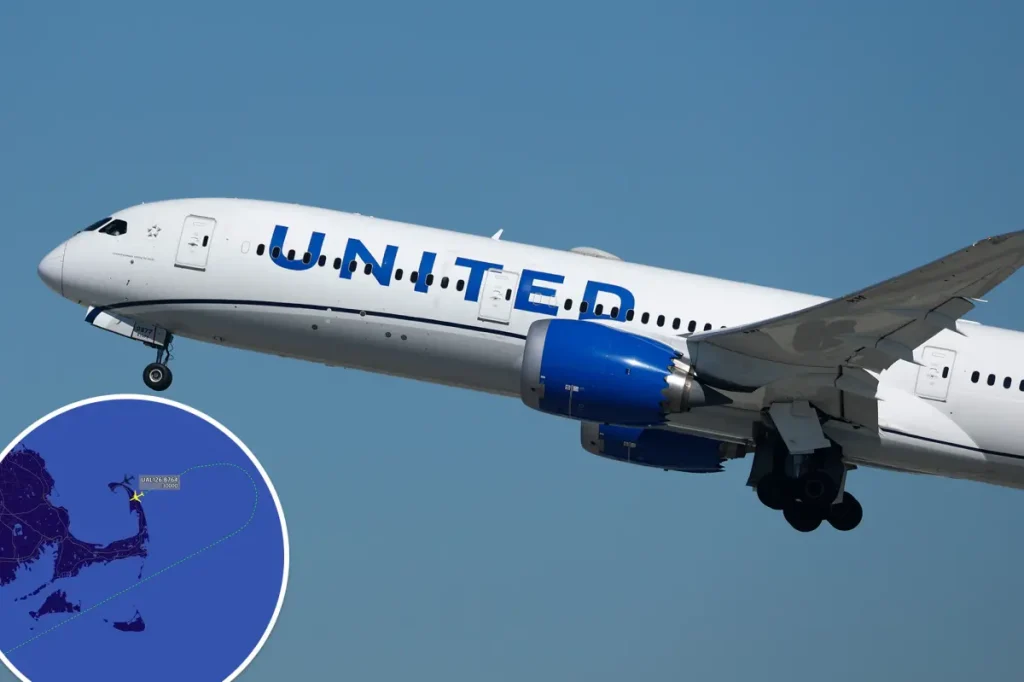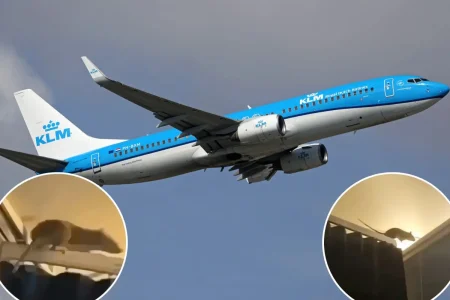A Laptop’s Unusual Journey: How a Dropped Device Turned a Transatlantic Flight Around
In the early hours of October 15, what started as a routine United Airlines flight from Washington Dulles International Airport to Rome transformed into an unusual aviation incident when a passenger’s laptop slipped through a gap in the passenger cabin and disappeared into the cargo hold below. This seemingly minor mishap led to a significant detour, with the Boeing 767-400ER making an unexpected U-turn off the coast of Boston less than an hour into what should have been an eight-hour journey. “We have a minor situation here with a passenger who has somehow dropped a laptop down the sidewall into the cargo pit area of the airplane,” the pilot calmly explained to Air Traffic Control, setting in motion a sequence of events that would delay the flight by five hours. The incident highlights the often-overlooked dangers of modern technology in aviation and the crucial decision-making process pilots undergo when faced with unexpected situations in flight.
The concern wasn’t simply about a passenger losing an expensive device – the real issue centered on safety. The dropped laptop was powered by a lithium-ion battery and had fallen near a sensitive area of the aircraft where it couldn’t be monitored or accessed by the crew. More worryingly, the device was still running when it dropped, creating uncertainty about how long the battery would remain active. “We don’t know the status of it. We can’t access it. We can’t see it,” the pilot explained to Air Traffic Control, underlining their decision to return to Dulles before crossing the Atlantic Ocean. While many passengers might have been frustrated by the delay, the crew’s decision reflected the aviation industry’s paramount focus on safety over convenience. The laptop had fallen into an area without fire suppression systems, making the potential risk of a battery fire particularly concerning for a flight about to embark on a long ocean crossing where diversion options would be limited.
When communicating with Air Traffic Control, the flight crew was careful not to classify the situation as an emergency, instead describing it as a precautionary measure. This distinction is important in aviation terms, as it indicates the level of urgency and the response required from ground personnel. “Due to the lithium battery in the cargo area… not even near the suppression system that we have for fires down there. So this is just a safety precaution,” the pilot clarified. The measured tone of these communications demonstrates the professional approach of commercial airline crews, who are trained to handle unexpected situations without causing undue alarm. After receiving clearance for rerouting, the aircraft landed back at Dulles at 12:35 a.m., more than two hours after its initial departure. One Air Traffic Controller remarked to the flight crew, “I’ve never heard anything like that before. Good story to tell at the pilot lounge,” to which the pilot responded that this was indeed a first in their flying career as well.
The incident didn’t end with the return to Dulles – airport staff located the wayward laptop, allowing the flight to refuel and prepare for a second attempt at the transatlantic crossing. The plane finally departed again at 3:25 a.m., ultimately reaching Rome five hours behind schedule. While the delay was undoubtedly inconvenient for passengers eager to begin their Italian adventures, the decision to return has been widely praised as the correct one. Commercial aviation operates on the principle that no schedule pressure justifies taking unnecessary risks with passenger safety. In this case, the unknown status of a powered electronic device with a lithium-ion battery in an inaccessible area presented a legitimate concern that warranted the cautious response. The pilots’ decision-making process exemplifies the “safety first” culture that has made commercial aviation one of the safest forms of transportation worldwide.
The incident on the Rome-bound flight isn’t isolated but rather part of a growing trend of concerns surrounding lithium-ion batteries on aircraft. These powerful energy sources, which power everything from smartphones to laptops and even electric vehicles, can become hazardous if damaged, overheated, or improperly manufactured. When lithium batteries fail, they can enter what’s known as “thermal runaway,” potentially causing intense fires that are difficult to extinguish with conventional methods. Federal Aviation Administration data shows that lithium battery incidents have been steadily increasing, with over 50 reported in the United States this year alone. This rising trend has prompted airports and airlines to implement stricter safety measures, including prohibiting lithium batteries in checked luggage where they cannot be monitored for signs of malfunction during flight.
The significance of these precautions was underscored earlier this month when an Air China flight heading to Seoul had to make an emergency landing in Shanghai after a lithium battery inside a passenger’s carry-on luggage burst into flames. In that incident, quick action by the flight crew contained the situation without injuries, but it served as a stark reminder of the potential dangers these common devices can pose in the confined environment of an aircraft. The United Airlines incident, while less dramatic, represents the preventative side of the same safety equation – taking decisive action before a potential problem develops into an actual emergency. As our reliance on portable electronic devices continues to grow, both passengers and aviation professionals face the ongoing challenge of balancing technological convenience with the paramount requirement for safety in flight. This incident serves as a reminder that even in our highly connected world, sometimes the safest decision is to pause, return, and ensure all is well before proceeding across the vast ocean ahead.













